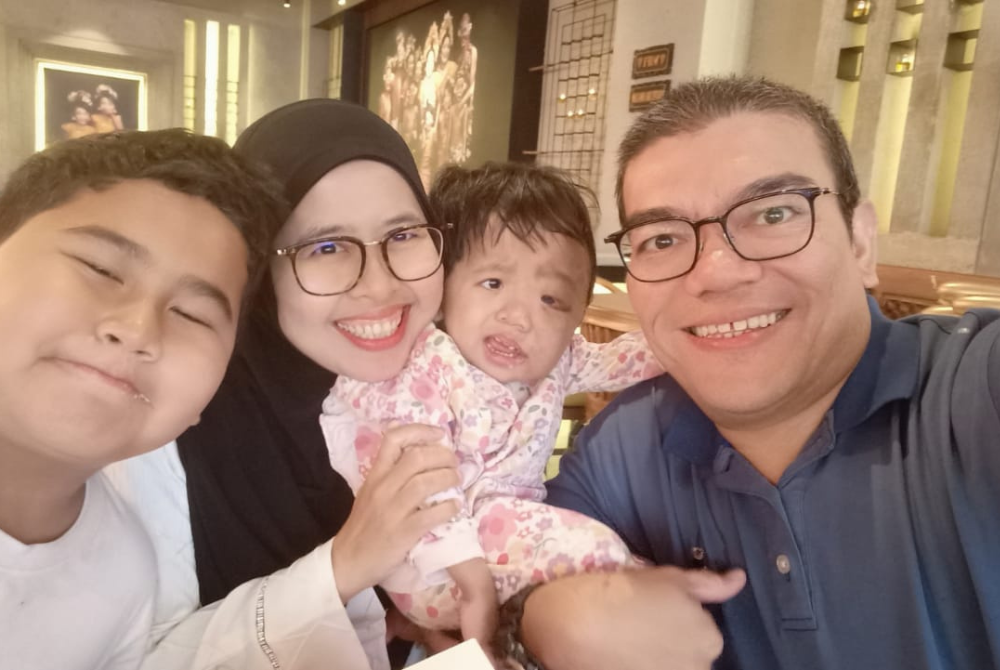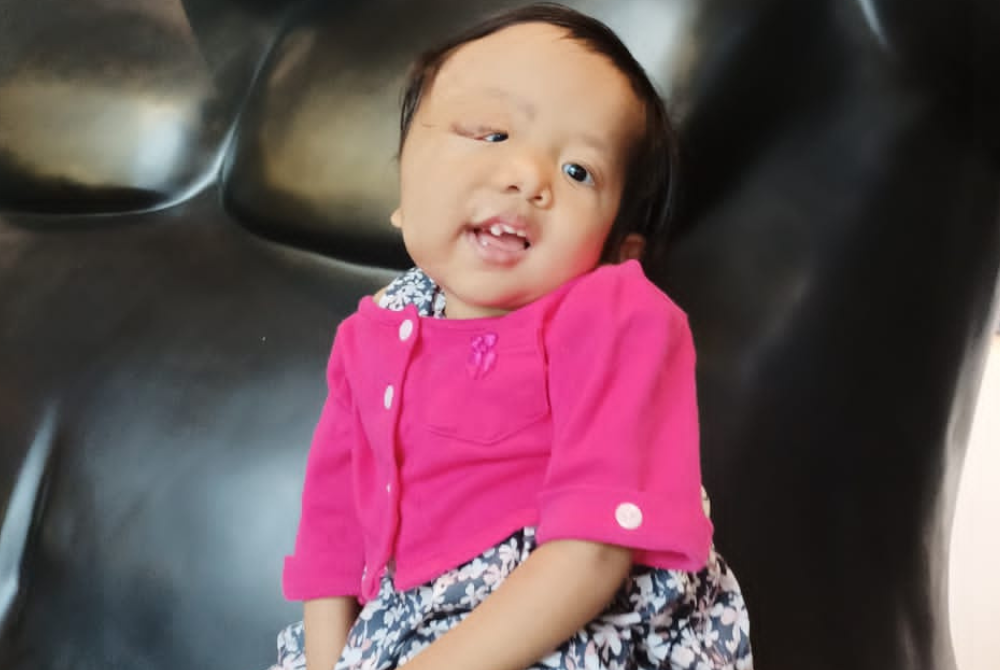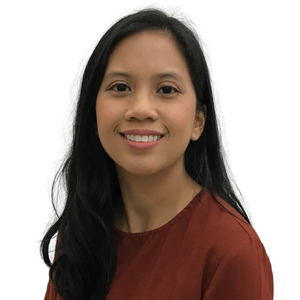The unexpected journey of raising a child with Neurofibromatosis
Amidst the fragile moments of motherhood, life took its twists and turns for Dr Nurul Izzaty Hassan.

Amidst the fragile moments of motherhood, life took its twists and turns for Dr Nurul Izzaty Hassan.
It was a somewhat smooth pregnancy when she was expecting her youngest, but fate had something else written for her.
Through an ultrasound at 26 weeks into her pregnancy, she was told that her baby’s head was larger than average, however there was no need for concern just yet.
At 39 weeks, Abeer Jannah Ahmad Ezhan was born. But upon delivery, a paediatrician was called to examine the baby as they noticed that her right eye was swollen.
Due to the presence of multiple brown spots on her skin and her swollen right eye, the doctor explained about the possibility of her newborn daughter being diagnosed with a rare disease called Neurofibromatosis (NF1), a genetic condition that causes tumours to grow along the nerves.
In an interview, Nurul, who is an associate professor of organic chemistry at the Faculty of Science and Technology, Universiti Kebangsaan Malaysia shared that it was a journey in itself to conceive Abeer, having gone through Endometriosis and multiple miscarriages after giving birth to her eldest child seven years prior.
"To hear the news of my newborn being diagnosed with NF1, I was too stunned and numb to speak.
"They found that the tumour was pressing on her optic nerve, in between the right side of her brain, which explained the swollen eye.
"At just three days old, Abeer was given glaucoma medication and at two weeks old, she was scheduled for her first MRI," said Nurul.
Medication was the only option to treat baby Abeer as an invasive surgery would likely be detrimental with her small body
As the weight of uncertainty and fear came uninvited on her journey in motherhood, Nurul and her husband was thrusted in the harsh reality of medical appointments with multiple doctors, treatments and an uncertain future.
"When she was three months old, she developed a focal seizure on and off for about 12 hours and was put into the ICU for two days.
"Aside from her tumour, they also found a cyst. With her being just three months old at the time, they weren’t able to drain the liquid from the cyst with a shunt, so they put her on seizure medication.
"After a month or so, she was free from the seizures and has consistently stayed like that until now, however she is still on seizure medication to avoid it from happening again," she said.
When Abeer was seven months old, they started her on physiotherapy as she wasn’t able to lift her head, let alone hit other milestones like crawling for example. After intensive therapy, Abeer was able to sit on her own when she turned one.

From the size of a 20 cent coin, the tumour size increased up to 50 cents, but Nurul said it has stayed that way until now.
But Abeer, who will turn three tomorrow on March 1, has also developed other health issues like scoliosis.
"We were so focused on monitoring her tumour that it took awhile for us to realise her curved backbone. So she was then scheduled for another MRI," she said.
Although NF1 is described as a genetic condition that causes tumours to grow along the nerves, neither Nurul or her husband are carriers of NF1.
About 50 per cent of people with NF1, the condition comes from gene mutations that occur from unknown reasons.
"During the first month of postpartum, I felt ashamed, guilty and I felt like I failed my elder son for not being able to give him a beautiful healthy sister.
"But when he met Abeer for the first time, he didn’t make her disfigured appearance a big deal.
"Seeing his reaction, I realised I shouldn’t be too harsh on myself," she said.
Due to her daughter's disfigured face, Nurul said she felt anxious to bring her daughter out and about, fearing that strangers would look at her differently or be too forward in asking about her condition.
"But my husband would proudly show her off to the public. He never cared about public’s perception and that encouraged me to do the same," she said.
TAKING IT ONE DAY AT A TIME
At the moment, Abeer is partially blind, where her vision is impaired on the right side.
"Doctors have warned me that as she grows older, she will likely develop other symptoms. They listed down the possibility of how severe these symptoms could get and frankly it’s very daunting for me to think about it.
"But I told myself that I will do what I can within my capability and what I can control. Things that are out of my control, I leave that to Allah SWT," she said.
Seeking comfort from other mothers of rare disease children, Nurul said she was advised not to worry too much about her daughter's future, but to take it one day at a time.
"I’ve come to terms with the fact that I am not a typical mother. I have a medically complex child and an active older boy who I also have to care for and pay attention to in addition to juggling my full-time job.
"Lucky for me, I have a strong support system. My husband, family and my in-laws have been together with me on this journey," she said.
While the future stays uncertain, Nurul remains positive and patient as she embraces the challenges that lie ahead.















